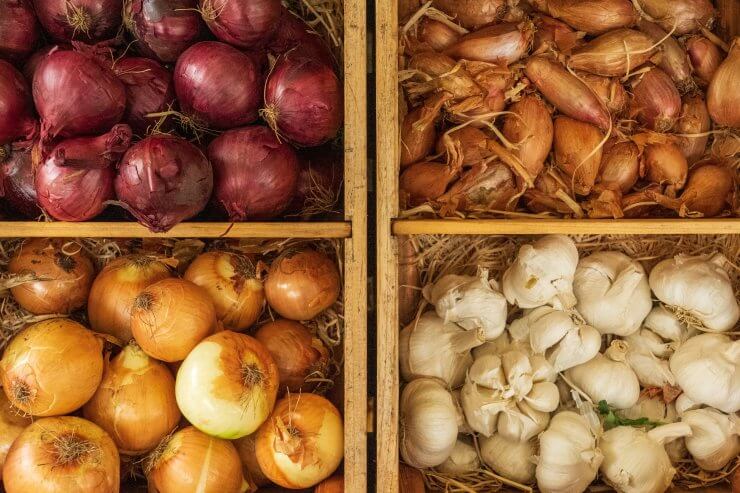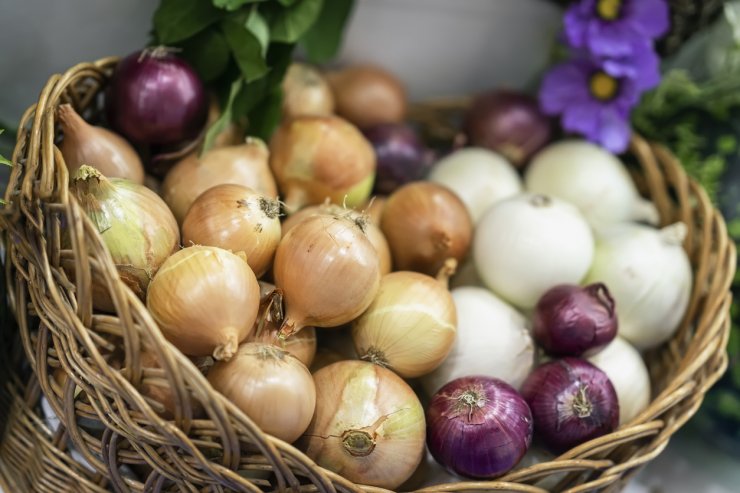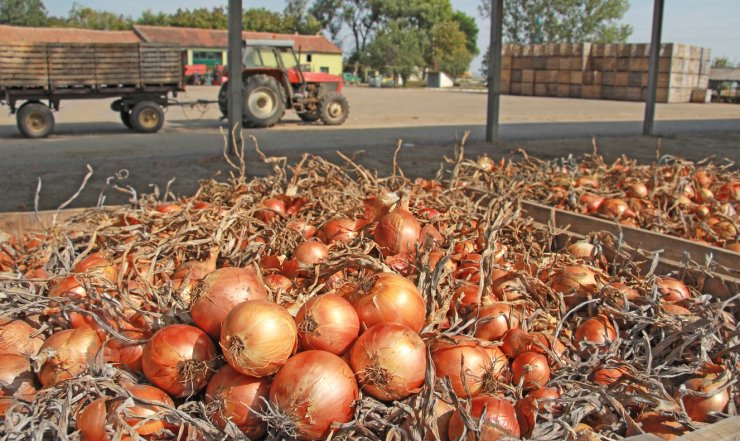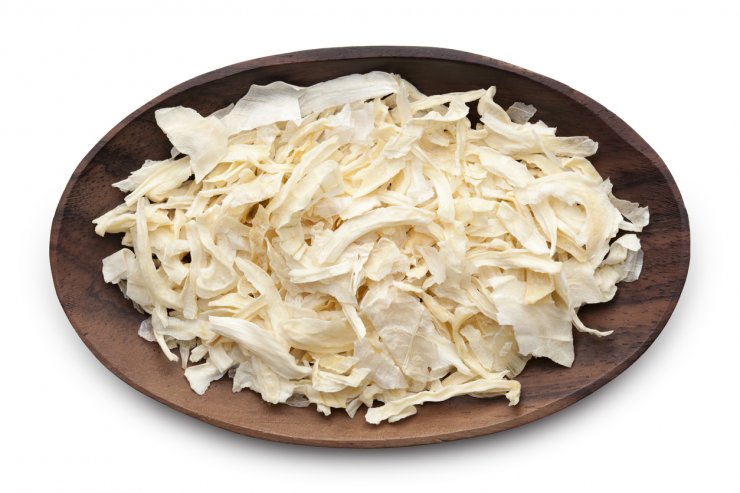
All hail the mighty (and versatile as heck) onion! From subtle flavors to sharp zings, onions can add so many dimensions to your recipes. Being able to use your own homegrown onions all winter long is the ultimate Little House on the Prairie dream. It’s also super cost-effective and adds peace of mind knowing that you’ve grown and stored your onions without chemicals or other variables coming into the mix. Storing onions is an excellent way to enjoy your vegetable garden in the cold winter months. I’ve put together some basic information and guidelines for how to store or preserve your onions, no matter what type.

Choosing the right onions to store
In general, onions fall into two categories: mild or pungent. The milder varieties tend to have bigger bulbs and taste sweeter. These are great to eat right away or preserve through canning or freezing. Mild onions don’t make good storing onions because they have high sugar and water content which makes them prone to rot or mold. These types of onions are great for preserving using other methods. (More on that later!)
Pungent onions, on the other hand, tend to have smaller bulbs and are more likely to get your tears flowing and have a powerful bite to their taste. These are great onions for cooking since they pack a lot of flavor. Pungent onions are ideal for storing since they don’t have a high water or sugar content. Some good varieties for storing onions include: Copra, Cortland, Ebenezer, Red Zeppelin, Red Bull, Stuttgarter, Sweet Sandwich, Talon, and Yellow Globe.

Curing onions
Curing onions is just a fancy way of saying drying them out. Before storing onions from your garden, you need to cure them by drying them out for three weeks or so. A great way to do this is to spread them out on a breathable surface, like an old window screen, lattice, or chicken wire tilted to make a horizontal surface. The key is for air to flow on both tops and bottoms of your onions. Once the onion necks are dried and the outer skins are tight, your onions have cured. At this point in the process, you may notice some of your onions are starting to bloom (bolt). Those should be used first or preserved quickly since they will rot more quickly.

Storing Onions
After your onions have cured, chop off the necks so only an inch or so is left. Cut any remaining roots from the bulb and brush off any leftover soil. (Note: there is another cool way to leave the necks and braid them together to form a thick vine for hanging, but I’m just not that coordinated!)
Hanging onions in a mesh bag is the ideal way to store them, to keep all surfaces exposed to air and avoid rot and mold. Mesh laundry bags work great, but I’ve also seen folks use pantyhose for this process. If you don’t have the real estate or ability to hang your onions, you can use a storage bin. The key is ventilation. Make sure your bin is porous in some way (a wire bin or a crate with breathable holes). Another tip is to add some paper towels to your bin to help absorb any moisture. Unlike storing potatoes, stored onions prefer a dry environment. In terms of storage location, the goal is to find a spot in your house that is cool, dark, and dry. Closets and basements are great for deep storage, but even a dark cabinet will work well.

Freeze, dry, or can: preserving methods
For storing onions like sweet onions or green onions, using a preserving method is your best bet. These methods will also work on any onions that may have started to sprout at the top since those won’t last very long in cabinet/closet storage. Here are three simple preserving methods for storing onions (though there are many variations of each).
Dry Method: If you happen to have a food dehydrator, you can slice onions and dehydrate them. An oven will work too at a low temp for a long time. From there, pulverize them with a food processor for your very own onion powder. Throw some salt in there to make it into onion salt.
Freeze Method: This is the method I use all the time. Simply chop your onions and place them in a freezer-safe container/bag. You can blanch your onions first in boiling water, but if you’re going to use them within a few months, blanching isn’t necessary.
Can Method: Canned properly, and these onions can last 3-5 years! Peel onions (and rough chop any really big ones that won’t fit into your canning jars). Boil in water for 5 minutes or until the skins are translucent. Reserve the cooking liquid, since you’ll use that in the cans. Place onions in jars with salt and cooking liquid and follow your preferred canning method.
Do you have a great method for storing onions? How about preserving them? Share your tips in the comments!


 Previous
Previous


My garden production was bad. Hoping for a better crop next year. I would like to know more about the canning process. I have a dehydrator and a meth to freeze them. If you don’t mined, the info would be very helpful.
Thank you
Sheila Teague
Here is an article about canning that you may find helpful.
https://foodgardening.mequoda.com/daily/food-preservation/pressure-canning-safety-rules-to-live-by/
A friend of mine taught me how the Japanese hang their onions. After digging up, cut off the roots but leave the tops, then dry for a couple of days. Tie the tops in a ‘sturdy’ knot and thread them on a clothesline and hang in your garage or under a roof. And a little dirt on them helps the onions last longer.
Thanks for the information, greatly helpful to know.
Thanks for the onion tips. Mine at present are in metal bins and It was great to hear about using paper towel as I fit it just to keep the mess off the counter. So what I’m hearing is separate the types of onions when you store them. Do not mix…also true having them in my counter bins?